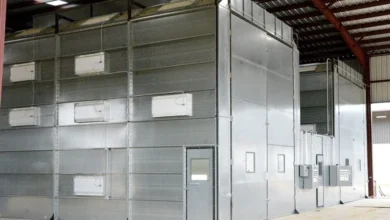Hairy Bush Clover: The Life Cycle From Seed to Blossom

Hairy Bush Clover: The Life Cycle From Seed to Blossom
Tragopogon ge Suillus arvensis, commonly known as the hair bush clover is a plant that has a rich life cycle. It is born as a seed, this seed sprouts and becomes a seedling. From this seedling, a mature plant with leaves and stems is produce When adapt to the tropics and reproduce in the right way, needs little attention thereafter. Then the plant bears flowers which in turn may be self by the bees or any other related insects. If pollination is successful then seeds are form in the plant and the process recommences once more.
The hairy bush clover life cycle has been of interest to researchers, and therefore there is extensive information about it. They have also been train on the various aspects of growth known as the factors behind seed germination and the role play by pollination. With this in mind, the information presented in this paper has enabled scientists to understand the position of hairy bush clover in various ecosystems and thus come up with measures to conserve this important plant species.
Those that wish to obtain more information on hairy bush clover, might approach the local conservation societies or universities. These resources can give you information about ongoing research, teaching aids and how you may participate in the preservation of endangered species. For more information on hairy bush clover, you can go to the internet and look for more information and articles on the subject.
Introduction to Hairy Bush Clover
The Hairy Bush Clover (Lespedeza hirta) is a perennial flowering plant native to North America.
It is a low-growing shrub that seldom grows more than 2 feet tall and has branches that are more or less covered with fine hairs. The leaves are simple, (alternate and compound) divided into three leaflets. These are assy with serrate margins and are blackish green in colour and they are oval.
The flowers of Hairy Bush Clover are small, small and white, in bracted spikes, terminating the branches. It flowers from June up to September and releases a nice scent making it a favorite for bees and butterflies. With time, these flowers change colour to brown, in which they develop seeds in pods that can lay dormant on the ground for years.
Due to the food values it possesses for various wildlife like deer, rabbits, quail and turkey, hairy bush clover is an important plant in its ecosystem. It strongly anchors the ground reduces soil erosion and enhances soil nitrogen fixing from the air to the soil.
Life Cycle of Hairy Bush Clover
The development of the Hairy Bush Clover is one that is intriguing and can be summarize as follows: Seed to Bloom. This perennial trailing plant, botanically known as Lespedeza hirta, thrives in meadows, prairie, and open woods in North America.
Germination
The Hairy Bush Clover’s life cycle begins with germination. The seed needs moisture and warmth to sprout. It takes a month for the seed’s outer layer to soften, allowing the root and shoot to grow.
Seedling
With time the root becomes longer and spreads throughout the ground while the shoot proactively struggles to touch the light. This is when a young plant depends only on reserve in its cotyledons which are the first leaves of the plant after seeds. It also begins differentiating bona fide leaves that are competent to perform the function of photosynthesis.
Vegetative Growth
The following stage is known as the vegetative phase during this phase or stag Hairy Bush Clover will focus on root development and vegetative grow. New leaves are produce during this phase and branches that grow horizontally have originated from rhizomes in the soil.
Flowering
Upon elongation, the plant or part of it becomes reproductive, a wonderful process known as flowering which occurs after 2-3 years. In late summer or early fall, small branched pinkish-purple flowers bloom at the tips of structures that attract bees and butterflies.
Germination and Early Growth Stage
It is among the most important stages in the life cycle of any plant and in this case.
it is equally true for the hairy bush clover. The phenomenon, whereby a seed starts developing into a new plant. This stage usually ranges from a few days to a few weeks depending on the prevailing environmental factors.
It is the process of germination when a seed reaches a moisture content, oxygen and the right temperature. In the case of hairy bush clover such favourable conditions are generally prevail during early spring.
The seed absorbs water, activating enzymes that break down stored food for the plant’s growth before photosynthesis.
IThe radicle, a small yellow shoot, emerges and grows downwards, anchoring the plant and absorbing water and nutrients from the soil.
Maturity and Flowering Stage
The mature stage is the stage in which the plant gets big .And fully grown the height and size of the plant is at its largest. It’s characteriz by:
- In the context of the model strong, establish root system is use
- Sturdy stems and branches
- Fully developed leaves
Factors influencing maturity:
Genetics
Light, temperature, water and nutrients – these are the four conditions of the environment.
Plant species
- Bud formation: Buds appear.
- Flower opening: Buds bloom.
- Pollination: Pollen is transferr.
- Fertilization: Sperm mass gets to the ovule and seed is form.
- Fruit development: Ovary develops into a fruit.
Seed Production and Dispersal Stage
Among all the phases of hairy bush clover plants, seed production and dispersal are the final and, at the same time, rather essential phase. It is the stage where seeds are develop, mature and then shed in new environments on the plant body.
During flowering the plant begins to produce seed in hairy bush clover plant. The plant bears small pink or purplish flowers, which grow in terminal racemes at the top of long slender peduncles. These flowers are rather sugary and nectar for bees butterflies and other insects visiting the plants and flowers.
After pollination takes place the act of pollination, the fertilized flowers will mature into a seed pod. Within this pod, little seeds start to develop as well as grow for several weeks. If the seeds ripen optimally, they are very small round seeds with a polish of brown or black colour.
Hairy bush clover seed dispersal increases with the maturity of the seeds. Due to this, the seeds may take a long to ripe or have not even ripened when dispersed. They will not have the capacity to fully germinate hence giving the possibility of producing new plants.
For the plant to be able to reproduce successfully,
then there is a need for the seeds to be produced at any time that the environment is most favourable.
Factors Affecting the Life Cycle of Hairy Bush Clover
The Hairy Bush Clover’s life cycle is influenced by various factors, despite its widespread growth. Some factors can significantly impact its development.
1. Climate and Temperature:
The hairy bush clover prefers conditions of the warm, temperate climate zone with moderate amounts of precipitation. It is most commonly situated in areas with hot summers and cold winters. They prefer the warm seasons to start from late spring up to early autumn just before the first frost. High temperatures particularly during summer and low temperatures during winter affect the growth rate and the health of the plant.
2. Soil Type and Quality:
The nature of the soil, as well as the quality of the soil in which it is planted, will determine the growth of the hairy bush clover. This plant naturally grows best in soils that are well-drained but with humus content at focal points. They have a small root system so when planted in compacted or inferior ground; they can be severely hampered. Sandy loam is regarded as suitable for hairy bush clover because the soil type offers sufficient drainage for the plant and, at the same time, does not deprive it of moisture.
3. Sunlight Exposure:
Hairy bush clover prefers an open area which means it requires at least 6 hours of direct sunlight for the plant to grow properly. Lack of adequate light will lead to short growth or limited flowering among the plants growing in that particular area.
Importance of Hairy Bush Clover in Ecosystems
Bush clover (Lespedeza hirta) is one of the perennial species that grow in the legume family. It is also called hairy lespedeza The plant grows in prairies, meadows and open woodlands across North America.
Even though this native wildflower does not require a particularly eye-catching cover as opposed to other plants, its role in ecosystems is vital. Hairy bush clover has thus been identified to fulfil vital functions in the regulation of the natural ecosystems as well as the promotion of different species’ continuation.
Here are some key reasons why hairy bush clover is an essential part of ecosystems:
1. Soil Health:
The many uses of hairy bush clover in ecosystems include nitrogen fixation in the soil. As with other legume plants, it performs a mutualistic nitrogen fixation with bacteria in the root nodules of the plant. These bacteria can reduce the nitrogen, and nitrogen gas from the air and fix it and make it available to the plants. Consequently, they make the soil charged with nutrients and energy that enhance the growth of the plants and in the process enhance the texture of the soil.
2. Habitat and Food Source for Wildlife:
Hairy bush clover is an important food plant for wildlife mammals including deer, elk, rabbits, quail, and different birds. The leaves of this plant are very nutritious containing a good proportion of protein and minerals which makes the leaves suitable for most animals at some point in their life.
Conservation Efforts for Hairy Bush Clover
Measures to protect the hairy bush clover should be taken as this plant species is endangered. As one of the endemic plant species in the legume family, hairy bush clover serves as one of the regulators of resident ecosystems.
Hairy bush clover was growing in huge numbers in prairies and savannas regions of some parts of the United States, but because of people’s behaviour of developing areas for agriculture and overgrazing by their cattle, it is rare to find hairy bush clover today. Scientists have said that out of the original habitat, only 1% today is as it was previously.
This decline raises conservation challenges that require hairy bush clover to be protected from being extinct; different measures have been taken by the government, non-governmental organizations and individuals owning private land. Such endeavours are meant to ensure that present human beings survive in addition to bringing back the original environment the species used to live in.
One major resource management strategy is to ensure the last stocks are preserved through the purchase of easements or the acquisition of leases on private land. This of course helps in avoiding the destruction or interference of key habitats with development projects.
Conclusion
After exploring the various stages of the life cycle of hairy bush clover. it is clear that this plant possesses unique qualities that make it a truly remarkable and valuable species. From its ability to thrive in adverse conditions to its important role in supporting pollinators and overall ecosystem health, there is much to appreciate about this small but mighty plant.




